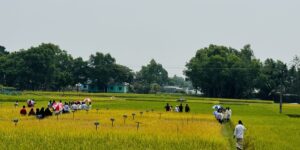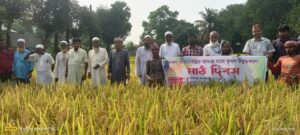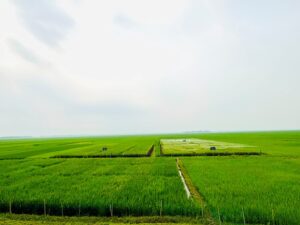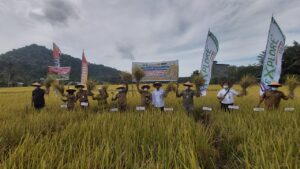
Outbreaks of grassy stunt virus once ruined rice harvests and brought hardship to poor farmers in South and Southeast Asia. Today, most commercial rice varieties developed by IRRI and its national partners have effective resistance to the virus — resistance borrowed from a wild cousin of cultivated rice that may no longer exist in nature.
“In the 1970s, grassy stunt virus was a major problem,” said Darshan Brar, a rice breeder in IRRI’s Plant Breeding, Genetics and Biochemistry Division. “IRRI scientists screened 7,000 rice lines for resistance to the virus. Fortunately, one of the wild rice lines, a single line of Oryza nivara from India, was found to be resistant.”
In 1974, IRRI released three varieties with grassy stunt resistance derived from O. nivara. “It’s a classic example of a gene that wasn’t available in cultivated rice being taken from wild rice,” added Dr. Brar, a specialist in such wide crosses. “It has had a major impact on developing varieties.”
This early success in wide crossing — so called because of the large genetic gap separating the two parental lines — suggests the potential benefits of tapping wild species for agronomically desirable traits. It also illustrates the practical value of preserving natural habitats and the biodiversity they harbor.
“That population of O. nivara from Uttar Pradesh, India, has never been found again,” reported Gurdev Khush, former IRRI principal plant breeder and 1996 World Food Prize laureate. If these “truly priceless seeds,” as Dr. Khush described them, had not been gathered for conservation in the International Rice Genebank at IRRI, the trait of strong resistance to grassy stunt might have been lost forever. Drive a species to extinction, and you stand to lose far more than the plant itself.
Every minute of every day, native habitat disappears somewhere on earth. The reasons for this destruction are many. Homes and infrastructure are built for an ever-growing population. New farmland is created.
Some natural areas are cleared out of necessity and some out of greed, but every loss of natural habitat risks impoverishing biodiversity. No one knows how many species exist on the planet. It is estimated that, for every one of the 2 million or so species that scientists have described, between 5 and 50 others have yet to be discovered. Habitat destruction is driving to extinction species we never even knew existed. Included among them may be wild rice varieties potentially useful to the wide-crossing work of Dr. Brar.
__________________________________________
Mr. Barclay worked for the International Rice Research Institute (IRRI), where he managed, wrote for and edited the institute’s magazine, Rice Today, and handled IRRI’s media relations during the international rice crisis of 2008.









